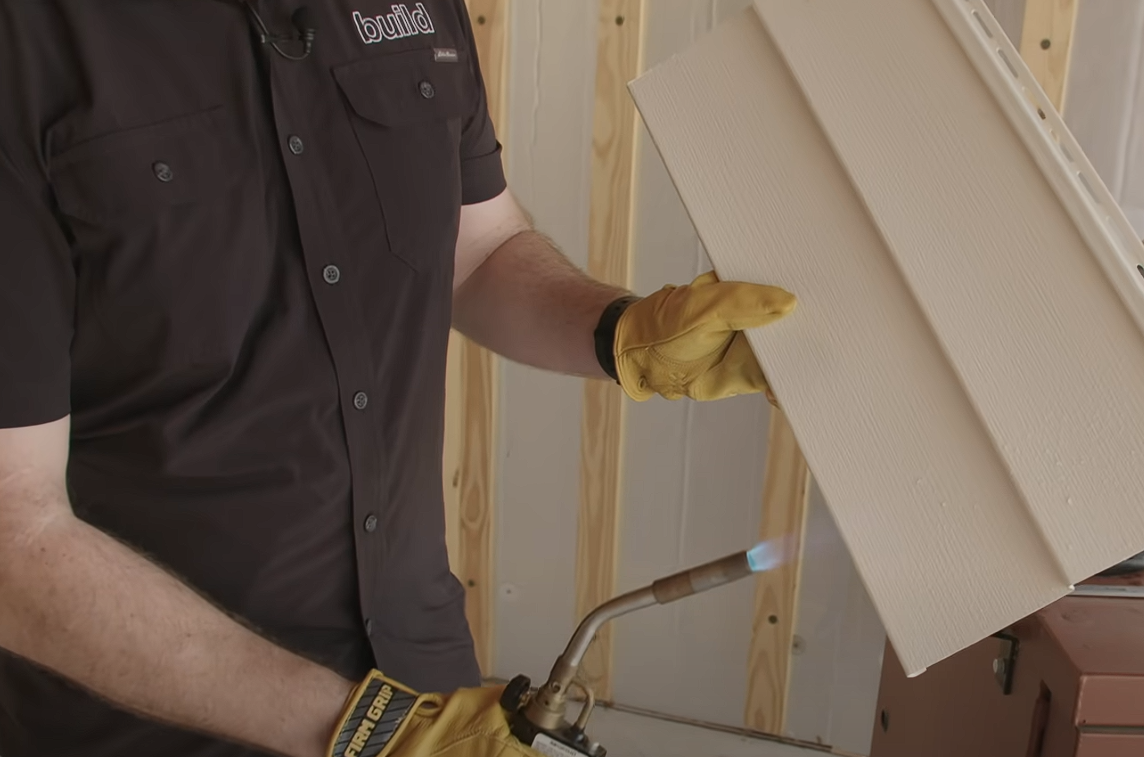Types of house siding: options, styles & tips
Building pro Matt Risinger breaks down the different types of siding for your home. Here’s his take on the pros and cons for vinyl, engineered wood, and fiber cement siding.

Residential building professional Matt Risinger breaks down the different types of siding for your home in a recent episode of his YouTube series “The Build Show.”
Risinger provides a helpful overview and his own opinions about three major categories of lap siding on the market today: vinyl, engineered wood, and fiber cement. Here’s his take on the pros and cons for each option.
A CLOSER LOOK AT DIFFERENT TYPES OF SIDING
Vinyl siding pros and cons

Vinyl siding is a well-known choice when it comes to waterproofing a home because it’s made of PVC resin, a type of plastic material.
- Low-cost option for siding a home, but not the most durable choice. Matt easily cuts through a vinyl siding sample with a pair of shears.
- Vinyl siding “is not going to do well in a fire.” He says the heat of a nearby grill, or intense light reflected from nearby windows, can disfigure or even melt some types of vinyl siding.
“If I were you, I would avoid vinyl, both on new construction and certainly on remodel situations as well," he advises.
Engineered wood siding pros and cons

Engineered wood siding is an option that offers the look of natural wood, but with performance-enhancing additives.
- Risinger expresses concerns about engineered wood’s long-term durability.
- Material may swell after prolonged exposure to water. Matt tests a piece of engineered wood siding, submerging one side in a small amount of water for approximately 48 hours. The dry side measures at .365 inches, while the wet side expands to .448 inches
- Due to the potential for swelling, wood can buckle if the siding is not properly gapped and caulked at the butt joints.
- Wood-based products such as engineered wood siding are combustible in wildfires, as well as in common scenarios like grill fires. “It’s not going to fare well,
- Risinger also points out that some pests can be an issue for engineered wood siding.
Fiber cement siding pros and cons

Risinger notes that fiber cement is a durable material made from Portland cement, sand, cellulose, and water. “There’s really nothing in here that I’m worried about termites eating.”
- When it comes to fire, he points to the fact that fiber cement siding is non-combustible and may help a home better withstand fire damage.
- Fiber cement maintains its dimensional stability when Risinger performs the water submersion test. For this reason, fiber cement siding doesn’t require gapping and caulking at the butt joints. “That’s a really nice benefit.”
- Fiber cement is aesthetically pleasing since it will hold and “take paint tenaciously.” He points out that factory-finished Hardie® fiber cement products have a durable and long-lasting baked-on finish.
“It’s going to look amazing even a decade from now,” he explains.
MORE FIBER CEMENT RESOURCES
When it comes to the different types of siding, James Hardie manufactures the #1 brand of siding in North America. You can learn more about the material, or explore some of the design options you’ll have to create your own dream home.
Unable to find Uniform Context. Ensure the devtools plugin is activated.